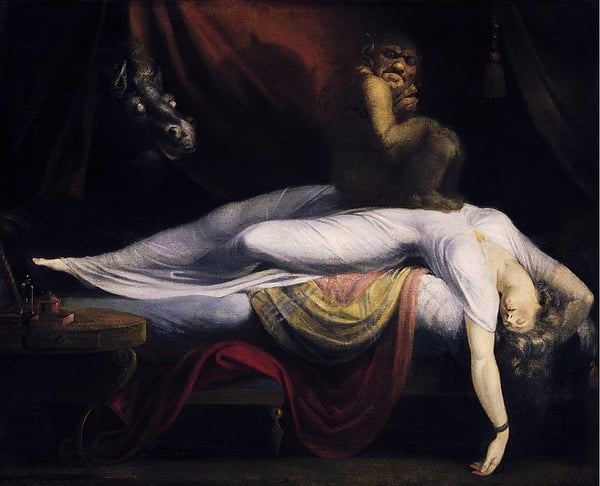Understanding Narcolepsy
Narcolepsy is a fascinating sleep disorder that can disrupt the very fabric of our daily lives. It is characterized by an overwhelming and sometimes uncontrollable desire for sleep, leading to sudden bouts of sleepiness at any given time, in any place. This can throw our normal sleeping patterns and rhythms off balance, making it challenging to live the life we truly desire.
One common aspect of Narcolepsy, affecting approximately 75% of sufferers, is a condition known as Cataplexy. Cataplexy involves the sudden loss of muscle tone triggered by intense emotions, causing our bodies to become slack and potentially leading to collapse. It's our body's way of challenging us to find balance amidst the chaos.
To better understand this sleep disorder, it's important to recognize the two distinct types of Narcolepsy. Type 1 includes the presence of Cataplexy, while Type 2 does not. Each type comes with its own set of unique challenges and experiences.
By delving into the depths of Narcolepsy, we can uncover the various symptoms and explanations that accompany it. Sleep attacks, for instance, are a common occurrence where extreme sleepiness engulfs us suddenly, similar to hitting a wall of exhaustion. These attacks can strike during the daytime without any apparent cause, making it impossible to resist the overwhelming urge to drift off into slumber.
Sleep paralysis, another symptom, renders us temporarily unable to move or speak upon waking up or just before falling asleep. This fleeting moment of powerlessness can range from a few seconds to over a minute, evoking a sense of terror and vulnerability. Some individuals even report brief periods of breathlessness, as if the very act of breathing has been momentarily suspended.
Hallucinations, too, play a role in the complex world of Narcolepsy. Around half of those affected will experience dream-like visions or delusions before falling asleep or upon waking up. These hallucinations may transcend mere visual experiences, encompassing a multitude of sensations. It's as if our REM sleep, the stage responsible for vivid dreaming, infiltrates the waking world when it shouldn't.
The impact of Narcolepsy symptoms extends far beyond mere inconvenience. Sleep attacks, particularly in severe cases, can pose significant dangers to our safety and overall functioning. Engaging in activities such as driving, operating heavy machinery, or performing high-risk work becomes perilous. Even maintaining job consistency and fulfilling the responsibilities of parenting or pregnancy can present significant challenges.
While there is currently no cure for Narcolepsy, managing its symptoms is crucial for leading a fulfilling life. This often involves a complex combination of medications, tailored to each individual's unique response. However, it's important to recognize that managing Narcolepsy requires a comprehensive approach that extends beyond medication alone.
Certain activities and occupations may need to be approached with caution or avoided altogether. Navigating daily life may require strategic planning and the ability to take necessary naps when needed, even in unconventional settings such as the workplace. Coffee, often seen as a temporary fix, can be both a helpful aid during sleep attacks and a hindrance to establishing normal sleeping patterns.
It's essential for sleep partners to be aware of the potential hallucinations and sleep paralysis experienced by Narcoleptics. Understanding and recognising these occurrences can alleviate fear and provide the necessary support and reassurance.
For those with Cataplexy, incorporating exercises such as meditation, yoga, and breathing techniques into daily routines can help manage strong emotional reactions and mitigate the risks associated with sudden muscle tone loss.
If you resonate with the experiences described in this article, it may be time to seek a diagnosis through a sleep study. Don't hesitate to take control of your sleep health and reach out for professional guidance.
Narcolepsy Symptoms and Explanations
Sleep attacks
One of the telltale signs of Narcolepsy is experiencing sleep attacks. These attacks are characterized by a sudden and overwhelming onset of extreme sleepiness. It's similar to hitting a wall of exhaustion at night, except it can happen during the daytime for no apparent reason. These sleep attacks can be so intense that sufferers cannot resist the overwhelming urge to fall asleep suddenly.
Cataplexy
As mentioned earlier, Cataplexy is a phenomenon that occurs in individuals with Narcolepsy. It involves a sudden loss of muscle tone, resulting in a slackness in the body. This can manifest as a slack jaw or even a complete collapse of the entire body. Cataplexy is typically triggered by intense emotions.
Sleep paralysis
Another symptom of Narcolepsy is sleep paralysis, which is a temporary inability to move or speak immediately after waking up or just before falling asleep. It can last for a few moments or even over a minute, and it can be a quite terrifying experience. Some individuals may also report brief periods of being unable to breathe.
Hallucinations
Approximately half of individuals with Narcolepsy will also experience hallucinations before falling asleep or upon waking up. These hallucinations can take the form of dream-like visions or delusions and may involve multiple sensations at once. It's as if the stage of REM sleep, responsible for vivid dreaming, intrudes into the waking world at inappropriate times.
By understanding these symptoms and explanations of Narcolepsy, we can better grasp the challenges faced by individuals with this sleep disorder.
 Sleep paralysis can be a terrifying experience where you are unable to move just after/before sleep - it's a common symptom of narcolepsy
Sleep paralysis can be a terrifying experience where you are unable to move just after/before sleep - it's a common symptom of narcolepsy
Hallucinations
Approximately half of individuals with Narcolepsy will also experience hallucinations before falling asleep or upon waking up. These hallucinations can manifest as dream-like visions or delusions and may involve multiple sensations. This occurs because REM sleep, which is responsible for vivid dreaming, intrudes into wakefulness at inappropriate times.
Sleep Deprivation
Sleep deprivation is common among individuals with Narcolepsy due to irregular sleep patterns.
Identifying Narcolepsy Symptoms
Unlike other sleep disorders, such as sleep apnea, Narcolepsy symptoms are often recognizable by the person experiencing them. Some questions to consider are:
- Do you have sudden and unexplained sleepiness that is not related to other factors, such as a sugar crash?
- Do you wake up in inappropriate places, like your workplace, without remembering falling asleep?
- Do you experience periods of being unable to move before sleep or after waking up?
The Dangers of Narcolepsy Symptoms
Sudden sleep attacks can pose dangers in various scenarios, including physical danger and disruptions to daily functioning. This is especially true in severe cases of narcolepsy where sleep attacks occur suddenly. The following activities may be prohibited or require additional precautions:
- Driving
- Maintaining job consistency
- Operating heavy or risky machinery
- Performing high-risk work (e.g., surgery, oil and gas industry, fishing)
- Parenting and pregnancy with narcolepsy present additional challenges
- Sleep deprivation also leads to other serious concerns due to lack of adequate sleep
Managing Narcolepsy Symptoms
While there is currently no cure for Narcolepsy, managing its symptoms is crucial for leading a fulfilling life. This often involves a combination of medications, although their effectiveness can vary among individuals. Successfully managing Narcolepsy requires a comprehensive approach that extends beyond medication alone. Consider the following:
- Certain activities and occupations may need to be approached with caution or avoided altogether.
- Navigating daily life may require strategic planning and the ability to take necessary naps, even in unconventional settings like the workplace.
- Coffee can be both a helpful aid during sleep attacks and a hindrance to establishing normal sleeping patterns.
- Sleep partners should be aware of hallucinations and sleep paralysis, providing support and reassurance.
- For individuals with Cataplexy, incorporating exercises such as meditation, yoga, and breathing techniques into daily routines can help manage strong emotional reactions and minimize the risks associated with muscle tone loss.
If you resonate with the experiences described in this article, it may be time to seek a diagnosis through a sleep study. Take control of your sleep health and reach out for professional guidance by taking an online sleep test.


